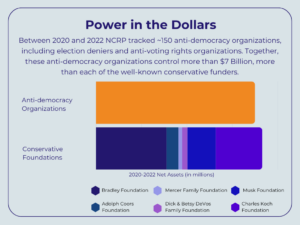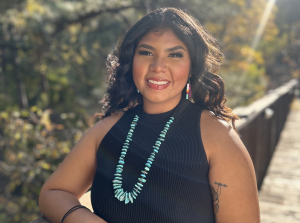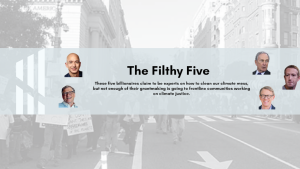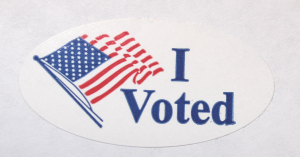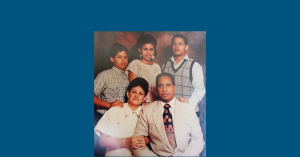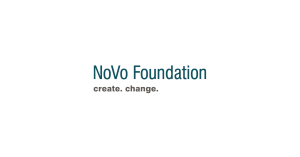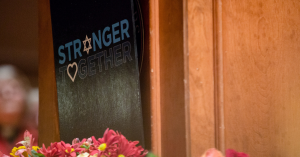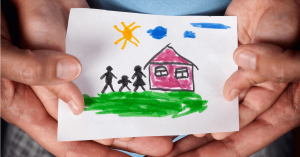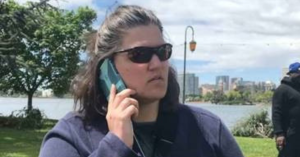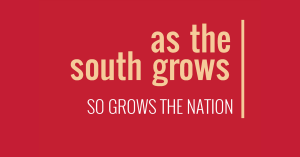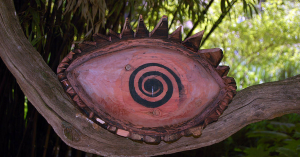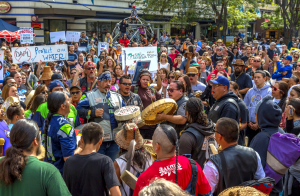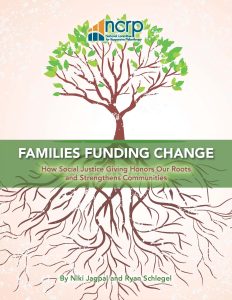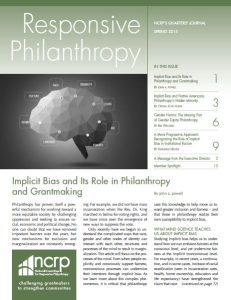The recent widespread rallying behind the Standing Rock Sioux Tribe’s fight against the Dakota Access Pipeline (DAPL) along with actress Shailene Woodley’s arrest at the pipeline site has brought a lot new attention to an issue that Indigenous people have been struggling with for generations. The fight to preserve tribal sovereignty and sacred sites has long been at the forefront for Native issues.
The U.S. federal government has obligations to protect tribal lands and resources and to protect tribal rights to self-govern. The U.S. first attempted to terminate reservations in 1946 when Congress set up the Indian Claims Commission to hear Indian claims for any lands stolen from them since the creation of the USA in 1776. The commission’s intention was to “get out of the Indian business” by providing only financial compensation instead of the return of land.
The protection of sacred sites is closely tied to treaty rights and sovereignty. In the past, the government has actively discouraged, and even outlawed, the exercise of traditional Indian ceremonies and practices on their own tribal land. To assume that the land is separate from the cultures erases the long-standing history of how these sites are an intrinsic part of continued practices and beliefs.
As an article by Cultural Survival points out, “Most of the disputes between traditional Indian religious practitioners and federal and state governments were resolved in favor of the government – with a resulting impact upon the ability of practitioner to utilize these sacred sites. For example, cases were decided which permitted the following activities to take place: Development of a ski area on the San Francisco Peaks in Arizona, sacred to the Hopi and Navajos; Construction of viewing platforms, parking lots, trails and roads at Bear Butte in South Dakota, sacred to many Plains Indians; and Flooding of sacred Cherokee sites by the Tennessee Valley Authority.”
Even today, there are struggles Native American communities are facing that are similar to Standing Rock. Bear Butte in Sturgis, South Dakota, is being threatened by encroaching bars and campgrounds. The Rosebud Sioux Tribe and the Black Hills is a well-known struggle and more recently, the tribe has been trying to assert their treaty rights to oppose the transfer of the Black Hills to the state of South Dakota.
In Utah, leaders from five tribes founded the Bears Ears Inter-Tribal Coalition, representing a historic consortium of sovereign tribal nations united in the effort to conserve the Bears Ears buttes cultural landscape, asking Obama to designate the site as a U.S. Presidential National Monument.
After Native American youth first sparked the push back against the DAPL, the Sacred Stone camp at the site of the pipeline has now seen the largest gathering of Native Americans and tribal representatives in more than a hundred years. The camp has been a display of unity and solidarity in Native nations, showing the world the resiliency and endurance of Native Americans, all recognizing that this fight is not just for the local tribes. Choosing to identify themselves as “protectors” instead of “protesters,” those at the frontline are looking at the bigger picture by fighting for a healthier environment for everyone.
With many allies and supporters asking “how can we help?,” Native Americans in Philanthropy (NAP), in partnership with the Standing Rock Sioux Tribe, is extending an opportunity for those wanting to make meaningful, long-term investments that will extend past the national spotlight of the protest. A funder tour from October 19-21 is showing the work happening on the ground for the tribe and ways in which they’re looking for help in their priority areas of youth, environmental justice and health.
 Sarah Eagle Heart is CEO of Native Americans in Philanthropy (NAP), a nonprofit promoting equitable and effective philanthropy to achieve a vision of healthy and sustainable Native communities. NAP members include Native and non-Native philanthropy, tribal programs, Native nonprofits and national networks, all dedicated to collectively improving equity and well-being for Native peoples across the United States. Follow them on Twitter @NativeGiving.
Sarah Eagle Heart is CEO of Native Americans in Philanthropy (NAP), a nonprofit promoting equitable and effective philanthropy to achieve a vision of healthy and sustainable Native communities. NAP members include Native and non-Native philanthropy, tribal programs, Native nonprofits and national networks, all dedicated to collectively improving equity and well-being for Native peoples across the United States. Follow them on Twitter @NativeGiving.
Photo courtesy of Native Americans in Philanthropy.















